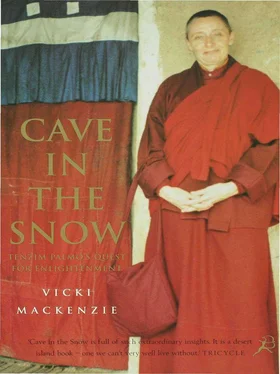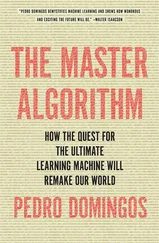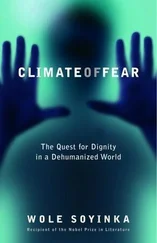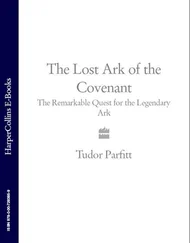‘Well, the high lamas have given the project their blessing and say it will be accomplished. So, I have faith. I continue,’she reasoned. Still, the radical change in her lifestyle bemused her. ‘How I got myself into this I just don’t know! If anyone had told me a few years back I would be travelling the globe teaching and raising money, I would have thought them crazy,’she said, leaning over and putting her arms over her head. ‘But if I’m not going to do it, who is? And it’s one way to repay the kindness of my lama.’
Even though it had changed course somewhat, the river was still flowing through Tenzin Palmo’s life and had her firmly in its current. As always she surrendered to it, bouncing along where it obviously wanted to take her, being guided every step of the way. She had started in Singapore in 1994 a year after her impassioned speech to the Dalai Lama. Initially things had not gone well. She had chosen Singapore at random, but had set nothing up in advance. Nobody knew she was in town, nor who she was, and she had absolutely no experience of self-promotion. Just when she was beginning to think it was hopeless, she had bumped into an old friend, a Chinese woman named Wong Pee Lee. It must have been a remarkable reunion, for only the night before Pee Lee had had a most vivid dream. In it she had seen Tenzin Palmo surrounded by Dakinis wearing beautiful silks. During the dream a voice had said: ‘Now is the time for you to help women.’ Tenzin Palmo told Pee Lee of her mission to build the nunnery. The dream came into focus, Pee Lee went into action, and the first of hundreds of lectures was organized. From Singapore Tenzin Palmo would travel throughout south-east Asia, touring Malaysia, Taiwan, Brunei, Hong Kong, Sarawak, Indonesia, Cambodia, the Philippines, then to England and France and on to the United States, where she crisscrossed her way between Washington, Seattle, New York, Maryland, Vermont, Hawaii, and up and down the coast of California before returning to Asia and doing it all over again. Each time someone would take up the baton of organizing a meeting. There was no shortage of venues, no shortage of attendees. Everywhere she went the crowds gathered, as word had spread about the English woman who had spent twelve years meditating in a cave in the Himalayas and people were curious to see the phenomenon for themselves. Many, and there were quite a few, were also eager to learn how that experience would translate into words.
They were not disappointed. For all her reluctance to take the stage, Tenzin Palmo proved to be an inspired teacher. She spoke from the heart, without notes, without preparation, and the words came tumbling out crystal clear. More than anything else they revealed the true extent of her spiritual maturity and what she had achieved in the cave. Displaying that quintessential feminine quality of cutting through abstract theories and ossified intellectual constructs, she ignored all traditional approaches and went straight to the heart of the matter. She was practical, down-to-earth, brilliantly lucid. Those in front of her lapped it up. Here was someone who could deliver the Buddha dharma in fluent, articulate English, someone who knew the nuances and hidden agendas of the Western psyche and who, most significantly, could speak from experience rather than from the textbook. It was a potent mix. Most significantly, she was a female in robes speaking from a platform – a novelty indeed.
It was what many had been waiting for. The Tibetan lamas, who first brought the Buddha’s words to the eager Western ears, had inspired more often than not by the force of their spiritual presence rather than by their broken English. The beauty on the outside was so obviously a reflection of exquisite states generated within and people were drawn like moths to the light. Extracting the meaning behind the awkward delivery and ornate cultural context, however, had demanded exceptional hard work. Confusion and problems arose, for the lamas, used to addressing the very specialized congregation of monks, had no precedent of how to deliver the Buddha dharma in terms applicable to householders, professionals, and women of the West. Only the truly dedicated who sat around long enough, or bothered to learn Tibetan, unwrapped the packaging to elicit the essence of what lay within.
With Tenzin Palmo all was made easy. She moved from Tibetan meditation centres to Zen groups, to dedicated Vipassana practitioners, to Christian communities, even to non-religious organizations dispensing wisdom, common-sense, and her own hard-won insights. And as she travelled her influence spread and her fame increased, in spite of herself.
‘Our minds are like junk yards. What we put into them is mostly rubbish! The conversations, the newspapers, the entertainment, we just pile it all in. There’s a jam session going on in there. And the problem is it makes us very tired,’ she tells a group of occupational therapists in Seattle, who have heard she is in town and have invited her to address them, believing that her experience may help them with the stress-loads they carry. ‘I congratulate you all on the job you are doing,’ she continues. ’You chose it not just because you need to earn a living. There are easier ways to earn a buck. Somehow you chose this job because you wanted to help. You people are giving out, giving out and you need to replenish otherwise you will just become like empty vessels.’ We need to take in as well as give out,’ she tells them.
‘When we normally think of resting we switch on the TV, or go out, or have a drink. But that does not give us real rest. It’s just putting more stuff in. Even sleep is not true rest for the mind. To get genuine relaxation we need to give ourselves some inner space. We need to clear out the junk yard, quieten the inner noise. And the way to do that is to keep the mind in the moment. That’s the most perfect rest for the mind. That’s meditation. Awareness. The mind relaxed and alert. Five minutes of that and you’ll feel refreshed, and wide awake,’ she assures them.
‘People say they have no time for “meditation”. It’s not true!’ she goes on. ‘You can meditate walking down the corridor, waiting for the computer to change, at the traffic lights, standing in a queue, going to the bathroom, combing your hair. Just be there in the present, without the mental commentary. Start by choosing one action during the day and decide to be entirely present for that one action. Drinking the tea in the morning. Shaving. Determine, for this action I will really be there. It’s all habit. At the moment we’ve got the habit of being unaware. We have to develop the habit of being present. Once we start to be present in the moment everything opens up. When we are mindful there is no commentary – it’s a very naked experience, wakeful, vivid.’
At every given opportunity she stresses that to lead a spiritual life one doesn’t have to emulate her. ‘Meditation is not just about sitting in a cave for twelve years,’ she pronounces. ‘It’s everyday life. Where else do you practise generosity, patience, ethics? How much patience did I have to have sitting up in my cave listening to the wolves howl?’ The point goes home. ‘Ultimately the Buddha dharma is about transforming the mind, which in Buddhist parlance includes the heart. The transformation of the heart/mind cannot be achieved if we only sit in meditation and ignore the dharma of our everyday life,’ she stresses.
She peppers her talks with quotations from the Sutras, stories she has heard, her own experiences, modern-day life: ’The film Ground Hog Day was a very Buddhist movie,’ she says. ‘It was about a man who had to live the same day over and over again. He couldn’t prevent the events occurring, but he did learn that how he responded to them transformed the whole experience of the day. He discovered that as his mind began to get over its animosity and greed and as he started to think of others his life improved greatly. Of course, it took him a long time to grasp this idea because at the beginning of the movie he was learning to play the piano and by the end he was playing a sonata.’
Читать дальше












